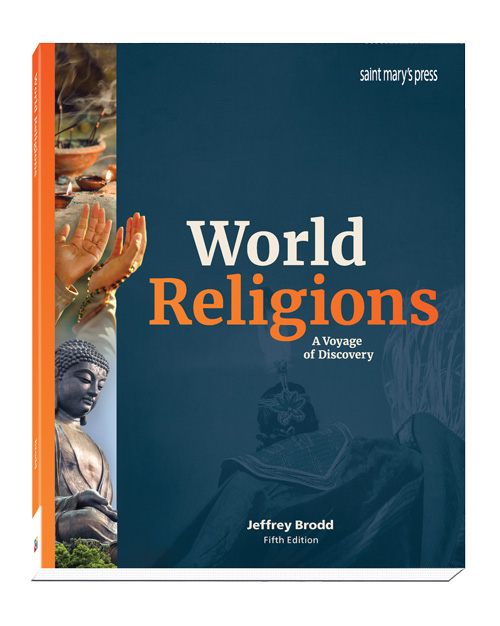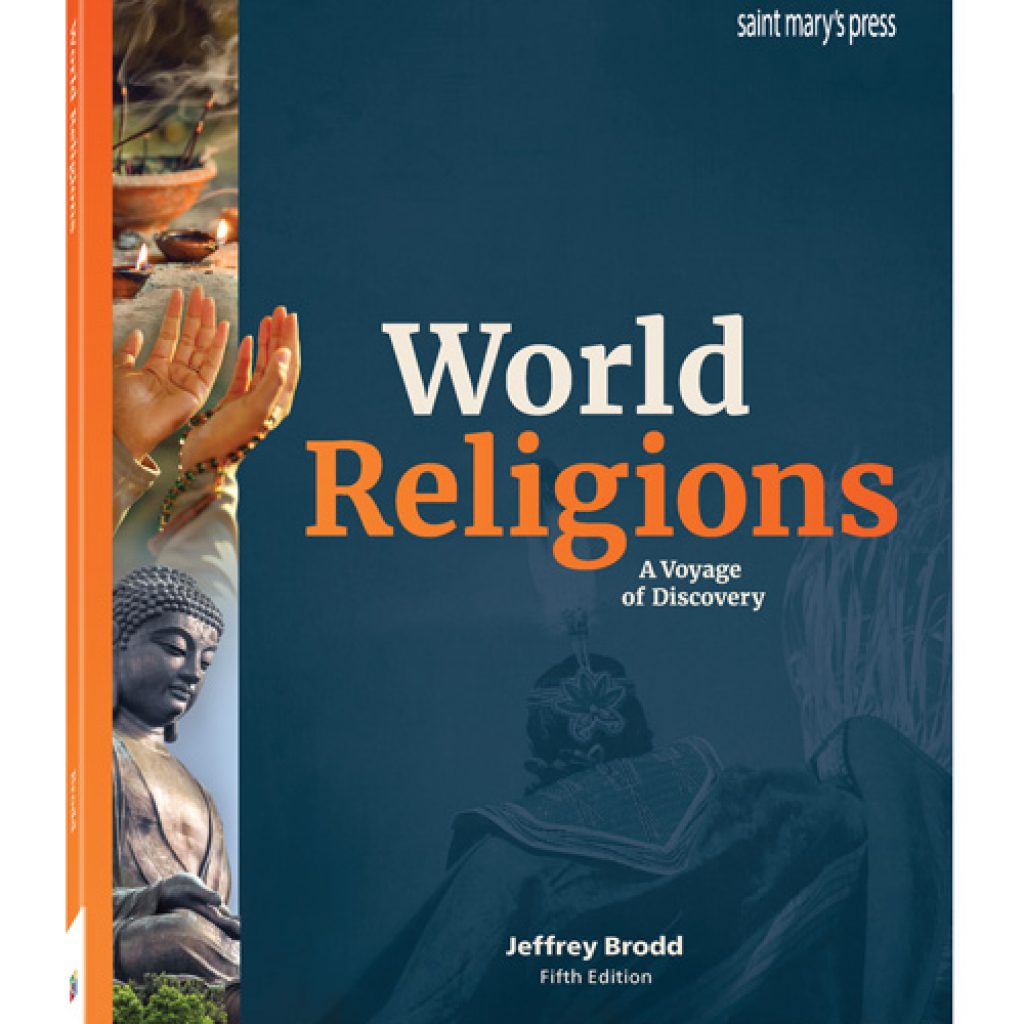
The Seven Dimensions of Religion
An exciting update is on the way! World Religions: A Voyage of Discovery, Fifth Edition is coming in 2026! Save your spot to evaluate a sample.
With this new edition, learners can dive into the richness of global faith traditions and begin to understand the world itself, across time and geography. Hinduism and Judaism, for example, trace their roots back to before the first millennium BCE.
Each religion is a window into humanity’s cultural and spiritual achievements. From shaping societies to inspiring profound ideas, religious traditions have left legacies that continue to guide how we think and live today. Simply put: to understand the world, one must also understand its religions.
Scholar Ninian Smart identified seven dimensions of religion. While every tradition expresses them differently, all religions weave together these threads:
- Experiential Dimension
- Mythic Dimension
- Doctrinal Dimension
- Ethical Dimension
- Ritual Dimension
- Social Dimension
- Material Dimension
These dimensions overlap and reinforce each other, creating a rich tapestry of belief, practice, and meaning.
1. Experiential Dimension
The Experimental Dimension of many religions lies in personal experience. In theistic faiths, God (or gods) may be encountered as a holy presence that inspires both awe and fascination.
- Moses at the burning bush is a classic example, fearful yet drawn to God.
- Gautama under the bodhi tree experienced enlightenment, giving birth to Buddhism.
- Muhammad’s revelations from Allah shaped the foundation of Islam.
Such moments are not limited to founders; anyone may experience visions or mystical union. In Indigenous North American traditions, the vision quest provides personal spiritual encounter. In Sufism, mystics seek God’s presence while still recognizing the distinction between human and the divine.
2. Mythic Dimension
“Myth” often means “falsehood” in everyday speech, but in religious study, myths are sacred stories that communicate timeless truths.
- The Genesis creation story teaches about God as Creator and humanity’s goodness.
- Stories of the Gautama the Buddha or the life of Jesus serve as guiding narratives, even if they don’t fit modern definitions of “myth.”
Myths are powerful because they are sources of sacred truth and give meaning to life. Passed down through generations, whether orally or written, they explain origins, purpose, and the way humans should live.
An updated edition of World Religions: A Voyage of Discovery is coming in 2026! Get a free evaluation copy to continue your exploration of faith traditions with clarity and depth.
3. Doctrinal Dimension
Adherents of a religion believe in something, like creeds, doctrines, or teachings of their faith.
- Christians, for example, believe in the Apostles’ Creed and in the doctrine of the Trinity.
Doctrines, creeds, and other teachings often originate in lived religious experience. They are often recorded in sacred texts, or scriptures. These writings serve as the foundations of religions, guiding how believers understand the world and their place in it.
4. Ethical Dimension
Every religion addresses the question: How are we to act while living in the world?
- The Ten Commandments in Judaism and Christianity offer clear moral guidance.
- The Buddhist principle of compassion parallels the Christian call to love one’s neighbor.
Ethical teachings are central to religious life because they connect belief with action.
5. Ritual Dimension
Most forms of worship are carried out through some formal practice, or ritual.
- Muslims’ pilgrimage to Mecca reenacts key events in Islamic history.
Rituals often retell myths and embody beliefs, making them tangible.
6. Social Dimension
Religions naturally involve communities, and most people consider the communal aspect of religion significant and attractive.
- In Christianity, parishes and congregations gather for worship.
- In Daoism, sages model wisdom for their communities.
- Saints, leaders, and teachers embody ideals of spiritual perfection.
This communal dimension strengthens both individuals and traditions through shared practice and structure.
7. Material Dimension
Religions also express themselves in the physical world through sacred art, spaces, and objects.
- Cathedrals, temples, and mosques stand as cultural masterpieces.
- Scriptures, crucifixes, statues of the Buddha, or natural sacred sites like rivers or mountains.
The material dimension shows how the sacred takes form in visible ways.
Why Study the Seven Dimensions?
Exploring the seven dimensions helps us see how religions answer humanity’s deepest questions. By studying world religions, we gain:
- Knowledge of how humans seek meaning and truth.
- Wisdom from traditions that have shaped civilizations.
- Understanding of people across cultures and faiths, enriching our role in today’s global village.
Religions are treasure troves of wisdom. Engaging with them broadens not just our knowledge, but also our appreciation of humanity’s shared search for the sacred.
Check out the updated World Religions: A Voyage of Discovery, Fifth Edition and get on the list to evaluate a copy for 2026!
Adapted from World Religions: A Voyage of Discovery, 5th Edition, by Jeffery Brodd, Et al., (Saint Mary’s Press, 2026). Copyright © 2026 by Saint Mary’s Press. All rights reserved. www.smp.org.



